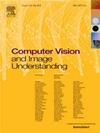When super-resolution meets camouflaged object detection: A comparison study
IF 4.3
3区 计算机科学
Q2 COMPUTER SCIENCE, ARTIFICIAL INTELLIGENCE
引用次数: 0
Abstract
Super-resolution (SR) and camouflage object detection (COD) are two prominent topics in the field of computer vision, with various joint applications. However, in previous work, these two areas were often studied in isolation. In this paper, we conduct a comprehensive comparative evaluation of both for the first time. Specifically, we benchmark different super-resolution methods on commonly used COD datasets while also evaluating the robustness of different COD models using COD data processed by SR methods. Experiments reveal challenges in preserving semantic information due to differences in targets and features between the two domains. COD relies on extracting semantic information from low-resolution images to identify camouflage targets. There is a risk of losing or distorting important semantic details during the application of SR techniques. Balancing the enhancement of spatial resolution with the preservation of semantic information is crucial for maintaining the accuracy of COD algorithms. Therefore, we propose a new SR model called Dilated Super-resolution (DISR) to enhance SR performance on COD, achieving state-of-the-art results on five commonly used SR datasets. The Urban100 x4 dataset task improved by 0.38 dB. Using low-resolution images processed by DISR for COD tasks can enhance target visibility and significantly improve the performance of COD tasks. Our goal is to leverage the synergies between these two domains, draw insights from the complementarity of techniques in both fields, and provide insights and inspiration for future research in both communities.
超分辨率与伪装目标检测的比较研究
超分辨率(SR)和伪装目标检测(COD)是计算机视觉领域的两个重要课题,具有多种联合应用。然而,在以前的工作中,这两个领域往往是分开研究的。本文首次对两者进行了全面的比较评价。具体而言,我们在常用的COD数据集上对不同的超分辨率方法进行了基准测试,并使用SR方法处理的COD数据评估了不同COD模型的鲁棒性。实验表明,由于两个领域之间目标和特征的差异,在保留语义信息方面存在挑战。COD依赖于从低分辨率图像中提取语义信息来识别伪装目标。在应用SR技术期间,存在丢失或扭曲重要语义细节的风险。平衡空间分辨率的增强和语义信息的保留对于保持COD算法的准确性至关重要。因此,我们提出了一种新的SR模型,称为膨胀超分辨率(DISR),以提高SR在COD上的性能,并在五个常用的SR数据集上获得了最先进的结果。Urban100 x4数据集任务提高0.38 dB。利用DISR处理的低分辨率图像进行COD任务,可以增强目标的可见性,显著提高COD任务的性能。我们的目标是利用这两个领域之间的协同作用,从这两个领域的技术互补性中汲取见解,并为这两个领域的未来研究提供见解和灵感。
本文章由计算机程序翻译,如有差异,请以英文原文为准。
求助全文
约1分钟内获得全文
求助全文
来源期刊

Computer Vision and Image Understanding
工程技术-工程:电子与电气
CiteScore
7.80
自引率
4.40%
发文量
112
审稿时长
79 days
期刊介绍:
The central focus of this journal is the computer analysis of pictorial information. Computer Vision and Image Understanding publishes papers covering all aspects of image analysis from the low-level, iconic processes of early vision to the high-level, symbolic processes of recognition and interpretation. A wide range of topics in the image understanding area is covered, including papers offering insights that differ from predominant views.
Research Areas Include:
• Theory
• Early vision
• Data structures and representations
• Shape
• Range
• Motion
• Matching and recognition
• Architecture and languages
• Vision systems
 求助内容:
求助内容: 应助结果提醒方式:
应助结果提醒方式:


